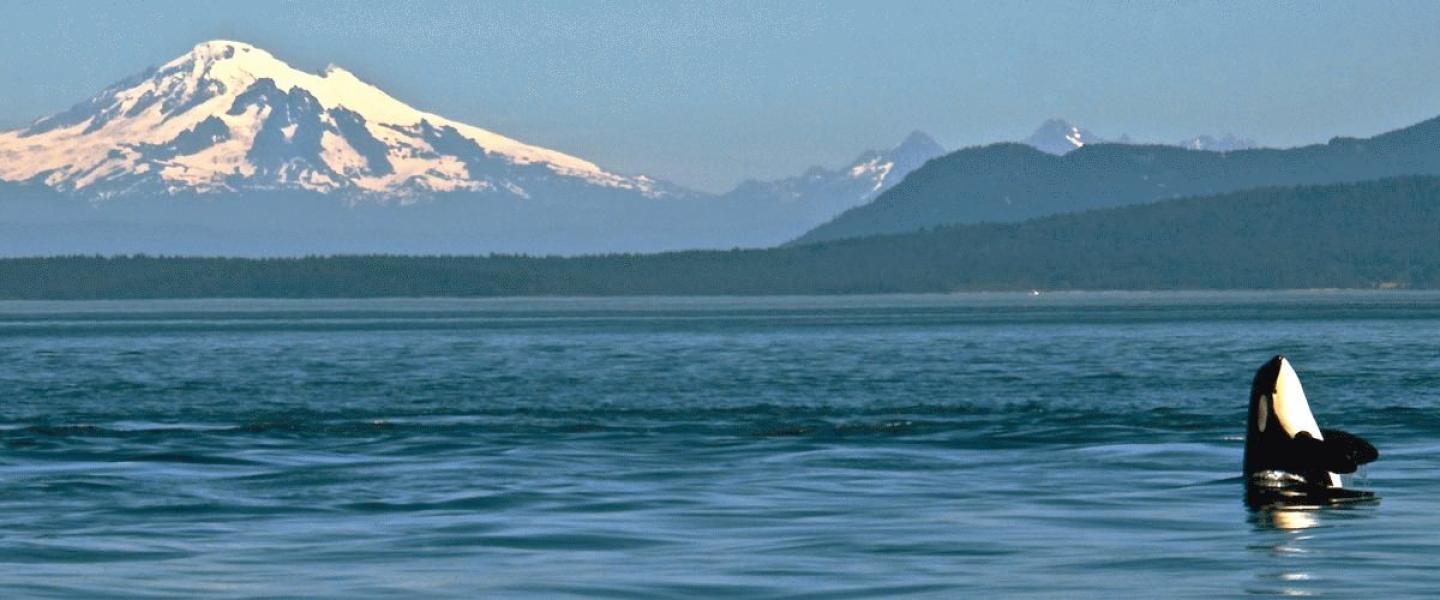
I know, you are probably wondering what in the world that word is and how it could possibly be pronounced. Well, both fall under the category of easy to explain. Mysticetes (MISS-ti-seats or MICE-ti-seats) are baleen whales that filter feed on small prey items. Of course, all baleen whales are filter feeders, that is what baleen is for, the difference comes in what they are filtering out of the waters.
Humpback Whale mouth with baleen. Photo courtesy of kidcyber.com.au
The three whale species that we see here in the San Juan Islands are Minke, Gray and Humpback, with the smallest being the minkes. These whales all use filter feeding as a means to catch their food and that water filtration is accomplished with baleen. Baleen consists of a series of hard, but flexible, plates made of keratin that line the upper jaw and fit down inside the lower jaw. The whales take large mouthfuls of sea water, including a cloud of whatever their desired food choice is, and then use their massive tongues to force the water out between the plates. Since the plates are arranged flat sides together like a loaf of bread, with hundreds of plates in one whale mouth, as the water squeezes between the plates all of the krill or plankton or fish are trapped against the plates. The whale will then use its powerful tongue to lick away all of the food and swallow it. Since there is constant abrasion against the plates from the tongue, they wear away and become very ragged making the inside of the whale's mouth look brushy. Luckily, keratin is the same substance that our fingernails and hair are made out of, so the plates continue to grow and renew themselves constantly. That way mysticetes never have the problem that toothed mammals do, which is that their teeth wear down and are not as effective for catching and eating prey.
Baleen whale mouth cross-section. Illustration courtesy of Ali Pearson
And what might that prey be? Well, that depends on the species. The minke whales that we saw today prefer bait fish, which are small herring, caeplin, smelt, sardines or anchovies. These fish are all 2-4 inches in length and are eaten by fish, porpoises, seals and whales. The gray whales that are seen around Whidbey Island and in Puget Sound prefer ghost shrimp and small crustaceans, while humpbacks like larger fish. Blue whales, which are seen in open ocean and are the largest animals to ever live on the planet, actually like the smallest food source for whales, which is plankton. Plankton are not quite microscopic and are what help give seawater its cloudy appearance. For a good recreation of this you can sample the movie "Finding Nemo".
So, from all of us at San Juan Safaris, to all of you creative feeders out there, thank you and we will...
See You In The Islands!
~Tristen, Naturalist